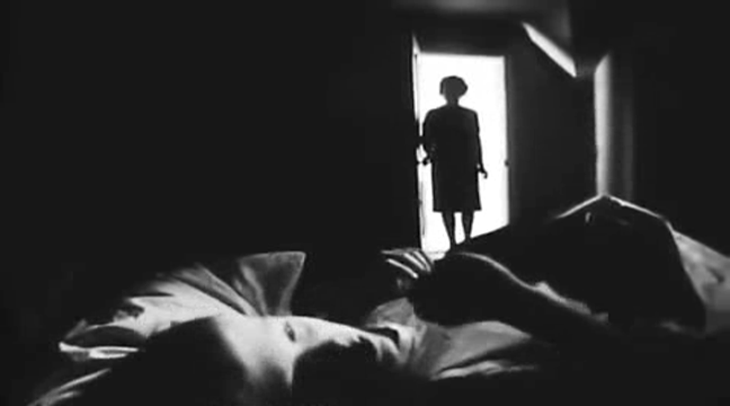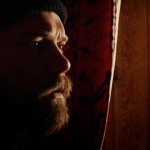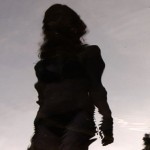Gene Kearney’s “SILENT SNOW, SECRET SNOW” (1966)
“It was as if, in some delightful way, his secret gave him a fortress, a wall behind which he could retreat into heavenly seclusion.”
– From Conrad Aiken’s SILENT SNOW, SECRET SNOW (1934)
—————
In his book ACADEMIC FILMS FOR THE CLASSROOM – an essential (if challengingly dry) tome on the history of 16mm films made for schools and other educational uses – film archivist Geoff Alexander of the Academic Film Archive makes a sharp distinction between “academic films” and “social guidance films”: the latter, in his eyes, are those that celebrate now-dated social mores and thus lend themselves easily to camp and unintentional hilarity. When people think of educational films, their first recollection might be those jaunty lessons on manners and nutrition; stretched further, perhaps the politically incorrect universe of producer Sid Davis or even the blood-soaked brutality of the driver’s ed film. All of these would come under the purview of social guidance in Alexander’s estimation, whereas he holds special esteem for those underappreciated paeans to history, geography, literature, the fine arts and sciences. But genre distinctions need not imply aesthetic stratification; they’re all films made to serve a didactic purpose first and foremost, with creativity a secondary consideration. Both ‘types’ have their auteurs and their hacks, and not everyone will agree upon which is which.
A levitra mit rezept 10 mg preise surprising number of golden-age classroom films and filmstrips deal with antisocial and sociopathic behaviour. Sometimes these are campy and judgemental lessons meant to steer “good kids” away from “bad kids”, but the best of them actually investigate this behaviour and try to instil empathy in children who encounter it. Encyclopedia Britannica Films’ ME, TOO? is about a boy who experiences destructive anger when other kids don’t want to play with him, and Sid Davis’ AGE 13 has a kid who sabotages, steals, hurts animals, and brings a gun to school after his mother dies generic cialis india discount and he finds himself unable to properly express his emotions of grief. The Mormon depresso classic CYPHER IN THE SNOW (which I mentioned in the original 2-Part print article “School of Shock” that spawned this column) sees a lonely child drop dead of a broken heart when routine neglect sees him completely withdraw from life to the point of self-obliteration. But to me the most frightening depiction of childhood alienation remains Gene Kearney’s 1966 adaptation of Conrad Aiken’s 1934 short story SILENT SNOW, SECRET SNOW.
Stark black and white images of bare tree branches are underlaid with eerie music by composer George Kleinsinger that is punctuated by sharp atonal bursts – like nerves being plucked; the film establishes itself as a horror tale from the opening frame. Children watching this – who would have been in grades seven or eight, judging from old educational film manuals – would know from this portentous music to settle in and steel themselves for an experience that, however thrilling, was sure to invade their dreams that night.
The film was the first of two adaptations by NIGHT OF THE LEPUS scriptwriter and frequent KOJAK director Gene Kearney of the well-loved Aiken story – he would later revisit it for an episode of NIGHT GALLERY, narrated by Orson Welles and starring the child actor Radames Pera (later to come to notoriety as young grasshopper in KUNG FU). Welles allegedly sent in his narration on a quarter inch tape, never signing a contract or requesting payment, or even acknowledging that he’d been offered a job and was accepting; his motivation was as mysterious as the story itself. There is often confusion concerning the two versions; while the 1966 version – apparently commissioned for CBS – can be seen in full on Youtube now, thanks to Archive.org and A/V Geeks.com, online listings frequently mix up the date and credits, as little documentation exists on the earlier version and its production history.
The story tells of a normal boy’s descent into a dream world of snow, and his increasing emotional withdrawal and hostility toward the real world. In the skewed universe of the story, told from the point of view of this disturbed child, the events occur over a matter of days, an insulating process – “the delicious progress” – that he is both aware and in awe of. One morning he imagines that the postman’s steps outside are muffled by something – perhaps snow that has fallen in the night – and it is this notion that sets his hasty mental deterioration in motion.
“But it was all so absurdly simple! It had amounted to mix levitra and cialis all so little. It was nothing, just an idea-and just why it should have become so wonderful, so permanent, was a mystery…The steps were curiously different- they were softer, they had a new secrecy about them, they were muffled and indistinct; and while the rhythm of them was the same, it now said a new thing- it said peace, it said remoteness, it said cold, it said sleep.”
Both the dialogue and the narration by Michael Keene stick fairly close to Aiken’s original text, although minimized to avoid over-exposition. Instead, many inner dialogue tracts in the text that convey Paul’s minute fixations (which, controversially, have led some to read him as an Aspberger’s case) are reconfigured as images: a curl in the back of a schoolmate’s head; the hypnotic glistening of a chandelier; a hand flailing strangely in the air, hoping to be called upon. In the original text, even the presentation of the words themselves convey his gradual isolation; when Paul’s teacher and fellow students have their initial dialogue, their words are in regular quotations. As the story progresses, they are in brackets, clearly demarcated as background noise. Paul is acutely aware that he has to put on an act to feign interest in the world around him – but as the snow closes in, he ceases to be interested in maintaining that façade.
One of the reasons the film works as well as it does it due to the ethereal presence of its young star Simon Gerard, who was 13 or 14 at the time of filming. “Simon became involved with the film because Gene Kearney was my brother-in-law, living in the same community,” says Gerard’s mother Alice, “and he saw Simon as someone who could play the role. He had had no prior acting experience but I think was intrigued by the idea of acting in the film, and he liked Gene.” Gerard was not aware of how Kearney would have explained the challenges of the role to her son, saying only that “Simon had a vivid imagination and the possibilities of the role I’m sure appealed to him.” But Radames Pera, who interpreted the role at a mere ten years old for the NIGHT GALLERY episode, recalls Kearney’s obsession with the story’s deliberate ambiguity. “Gene told me he felt that Paul crosses over into ‘the other side’…and that ‘other side’ could be physical death, or it could be mentally dying to this world, totally entering over into the fantasy world – which one could interpret as autism.”*
Simon Gerard’s strange delivery has an uncanny quality to it that is lacking in the NIGHT GALLERY version, despite Pera’s own compelling turn as the troubled Paul. In many ways the casting of Simon Gerard was prescient; it would price of propecia from canada be his only film, and he had a turbulent life afterward. Watching the film in light of this creates noticeable parallels. As Alice Gerard recalls:
“Simon was not an easy child. He would have ideas for great projects, but would often become dissatisfied and abandon everything before it was completed. Later, as he grew older and realized he was gay and what it meant, he hid a lot of his life from us and, like most kids in our area at the time, did a lot of experimenting with drugs. He was alternatively happy and deeply depressed. Eventually, he accomplished a great deal and had many close friends. Although he never graduated from high school, he was the most intelligent person in our family and had read his way through the whole of the Encyclopedia Brittanica. I miss him a great deal. He and I shared interests in books, music and people. I have wondered if his life would have been easier today, when being gay is not the stigma it was in his adolescence. Whatever the reason, his life was always full of ups and downs, euphoria and despair, and the results of using alcohol to deal with this situation eventually led to his early death at the age of 55.”
SILENT SNOW, SECRET SNOW’s asphyxiating darkness is also implicitly intertwined with the fragile psyche of its author, Conrad Aiken, who later cited the tale as “a projection of my own inclination to insanity.” At age eleven, Aiken discovered his parents’ bodies after a murder-suicide. And although Aiken tended to put himself into his stories in one way or another, unable to separate his characters from his own obsessions, it is telling that in his autobiography USHANT (1952), he describes the event of his parents’ death in the third person.
“After the desultory early-morning quarrel, came the half-stifled scream, and the sound of his father’s voice counting three, and the two loud pistol shots and he tiptoed into the dark room, where the two bodies lay motionless, and apart, and, finding them dead, found himself possessed of them forever.”
This was the defining moment in Aiken’s life, and he struggled with depression and anxiety ever after. Although he openly wrote of failed suicide attempts, when he died it would be of natural causes, in the same place where he was born – as with SILENT SNOW, SECRET SNOW’s tragic star Simon Gerard. After Gerard’s death, his mother wrote in the Palisades, NY newsletter:
“There is a tendency to idealize those who have recently left us. Simon struggled with his own demons; at times he was difficult to live with and at times he no longer wanted to live. I am glad he stayed around as long as he did. Simon was never satisfied with everyday reality. He wanted to transform it, and much of the time he succeeded.”
——————
*Skelton, Scott and Jim Benson. Rod Serling’s Night Gallery: An After-Hours Tour. Syracuse University Press, 1999, pg 170
HUGE thanks to David Obuchowski of Goes Cube, whose music video for Saab Sonnet – which featured footage from SILENT SNOW, SECRET SNOW – was the unlikely conduit to interviewee Alice Gerard. You can see the Goes Cube video HERE.

 April 24, 2013
April 24, 2013  No Comments
No Comments














